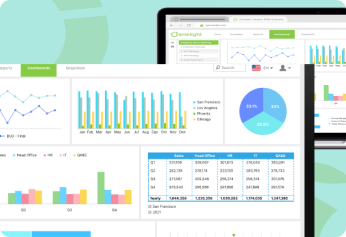What is Zero-Based Budgeting?
Zero-based budgeting is a financial planning method where you assign every dollar of your income to a specific purpose before you spend it. Unlike traditional budgeting that adjusts previous spending patterns, zero-based budgeting starts from scratch each month.
The core principle is simple: Income minus expenses equals zero. This doesn't mean you spend everything—it means you deliberately decide where each dollar goes, whether that's rent, groceries, savings, or debt payments.
Think of it as giving every dollar a job. When Sarah, a marketing manager, switched to zero-based budgeting, she discovered she was spending $200 monthly on subscriptions she'd forgotten about. By assigning each dollar intentionally, she redirected that money toward her emergency fund.
This approach differs from percentage-based budgets (like the 50/30/20 rule) because it requires you to justify each expense rather than following preset formulas.
How Does Zero-Based Budgeting Work?
Zero-based budgeting follows a systematic process that requires careful planning and monthly adjustments.
The Monthly Process
Step 1: Calculate your total monthly income after taxes.
Step 2: List all fixed expenses (rent, insurance, minimum debt payments).
Step 3: Assign money to variable expenses (groceries, gas, entertainment).
Step 4: Allocate remaining funds to savings goals and debt payments.
Step 5: Verify that income minus all allocations equals zero.
Step 6: Track spending throughout the month and adjust as needed.
The key is being intentional with every allocation. If you have $3,500 in monthly income, you must assign all $3,500 to specific categories. Any leftover money gets assigned to savings, debt repayment, or other financial goals.
Real-Time Adjustments
Unlike set-and-forget budgets, zero-based budgeting requires ongoing attention. If you overspend in one category, you must reduce spending elsewhere or move money between categories to maintain the zero balance.
Advantages of Zero-Based Budgeting
Zero-based budgeting offers several compelling benefits for individuals seeking better financial control.
1. Increased Financial Awareness
This method forces you to examine every expense. Many people discover they're spending money on forgotten subscriptions, impulse purchases, or categories they didn't realize consumed significant portions of their income.
2. Better Resource Allocation
By starting from zero each month, you can adjust your budget based on changing priorities. If you have a wedding to attend, you can temporarily reduce dining out to increase your clothing budget.
3. Eliminates Lifestyle Inflation
Zero-based budgeting prevents unconscious spending increases. When you get a raise, you must deliberately decide how to allocate the extra income rather than letting it disappear into general spending.
4. Accelerated Goal Achievement
Because every dollar has a purpose, you can direct more money toward specific goals like debt repayment or savings. This intentional allocation often leads to faster progress than hoping money will be left over at month's end.
5. Reduced Financial Stress
Knowing exactly where your money goes eliminates the anxiety of wondering if you can afford something. You've already planned for expenses and allocated money accordingly.
Disadvantages of Zero-Based Budgeting
Despite its benefits, zero-based budgeting presents several challenges that may not suit everyone.
1. Time-Intensive Process
Creating a zero-based budget requires significant time investment. You must track every expense, categorize spending, and regularly adjust allocations. This monthly planning can take several hours initially.
2. Requires Detailed Record-Keeping
Success depends on meticulous tracking. You need to monitor spending throughout the month and maintain detailed records of where money goes. This level of detail overwhelms some people.
3. Less Flexibility for Irregular Income
Freelancers, commission-based workers, or those with seasonal income find zero-based budgeting challenging because it assumes consistent monthly income. Variable income requires more complex planning and frequent adjustments.
4. Can Create Rigidity
Some people become too restrictive with their allocations, creating stress when life doesn't follow the budget perfectly. This rigidity can lead to budget abandonment if perfectionism takes over.
5. Learning Curve
New users often struggle with the initial setup and monthly adjustments. It takes several months to develop the skills and habits necessary for successful implementation.
Zero-Based Budgeting vs. Traditional Budgeting
Understanding how zero-based budgeting compares to traditional methods helps you choose the right approach.
|
Aspect |
Zero-Based Budgeting |
Traditional Budgeting |
|
Starting Point |
Begins from zero each period |
Uses previous period as baseline |
|
Expense Justification |
Every expense must be justified |
Adjusts existing expenses |
|
Flexibility |
High - can reallocate monthly |
Moderate - follows established patterns |
|
Time Investment |
High - requires detailed planning |
Low to moderate |
|
Financial Awareness |
Very high - scrutinizes all spending |
Moderate - focuses on changes |
|
Goal Achievement |
Faster - intentional allocation |
Slower - relies on leftover funds |
|
Best For |
People wanting detailed control |
Those preferring simple adjustments |
When Traditional Budgeting Works Better
Traditional budgeting suits people with stable expenses who prefer simplicity. If your spending patterns are consistent and you're generally satisfied with your financial progress, traditional methods may be sufficient.
When Zero-Based Budgeting Excels
Zero-based budgeting works best for people who want maximum control over their finances, have specific goals they're working toward, or need to make significant changes to their spending habits.
How to Create a Zero-Based Budget
Creating your first zero-based budget requires systematic planning and honest assessment of your financial situation.
Getting Started
Step 1: Gather three months of bank statements and credit card statements.
Step 2: Calculate your average monthly after-tax income.
Step 3: List all fixed expenses (rent, insurance, loan payments).
Step 4: Estimate variable expenses based on past spending patterns.
Step 5: Identify your financial goals (emergency fund, debt payoff, savings).
Building Your Categories
Create specific categories rather than broad ones. Instead of "miscellaneous," use categories like "personal care," "pet expenses," or "gifts." Specific categories provide better spending awareness and control.
The Allocation Process
Step 1: Start with fixed expenses that can't be changed.
Step 2: Allocate money to essential variable expenses (groceries, utilities).
Step 3: Assign funds to financial goals (savings, debt payments).
Step 4: Distribute remaining money to discretionary spending.
Step 5: Ensure total allocations equal your income.
Monthly Maintenance
Step 1: Track daily spending against your allocations.
Step 2: Adjust categories when you overspend in one area.
Step 3: Review and revise next month's budget based on actual spending.
Step 4: Celebrate successes and learn from overspending incidents.
Who is Zero-Based Budgeting Good For?
Zero-based budgeting works best for specific personality types and financial situations.
Ideal Candidates
- Detail-oriented individuals who enjoy tracking and analyzing their spending patterns find zero-based budgeting satisfying and effective.
- People with specific financial goals benefit from the intentional allocation approach. Whether you're paying off debt, saving for a house, or building an emergency fund, this method accelerates progress.
- Those who overspend regularly gain control through the required planning and tracking. The method forces awareness of spending patterns and prevents unconscious overspending.
- Individuals wanting financial education learn about their money habits through the detailed tracking and categorization process.
Less Suitable Situations
- People preferring simplicity may find the detailed tracking overwhelming and abandon the system.
- Those with highly irregular income struggle with the monthly planning approach and may need modified versions.
- Individuals who travel frequently or have unpredictable schedules may find the ongoing maintenance challenging.
- People who become obsessive about money tracking may create unhealthy relationships with spending through excessive restriction.
Challenges and Considerations
Successfully implementing zero-based budgeting requires understanding and preparing for common obstacles.
Common Implementation Challenges
- Perfectionism paralysis stops many people from starting. Remember that budgets are planning tools, not rigid rules. Expect adjustments and imperfection, especially initially.
- Category confusion occurs when expenses don't fit neatly into predetermined categories. Create a "miscellaneous" category for unexpected expenses and refine categories over time.
- Tracking fatigue develops when people try to monitor every penny. Focus on major categories first, then add detail as the habit develops.
Overcoming Obstacles
- Start simple with major categories and add detail gradually. Don't try to track every small expense immediately.
- Use technology to simplify tracking. Banking apps, budgeting software, or even simple spreadsheets can automate much of the monitoring.
- Build flexibility into your system. Allow category transfers and expect monthly adjustments as you learn your spending patterns.
- Focus on trends rather than perfect accuracy. The goal is awareness and intentional spending, not accounting precision.
Making It Sustainable
- Review regularly but don't obsess. Weekly check-ins prevent major problems without creating daily stress.
- Celebrate progress rather than dwelling on mistakes. Acknowledge improvements in financial awareness and goal achievement.
- Adjust expectations based on your lifestyle and personality. Modify the system to work for you rather than forcing yourself into a rigid framework.
Streamline Your Financial Planning with Modern Solutions
Zero-based budgeting provides excellent financial control, but managing complex budgets shouldn't consume all your time. Just as individuals benefit from intentional money allocation, growing businesses need efficient financial planning systems that eliminate spreadsheet complexity.
Ready to move beyond manual budget management? Book a demo to see how Limelight's FP&A platform helps modern finance teams streamline their planning processes while maintaining the detailed control that makes zero-based approaches so effective.
Whether you're perfecting personal budgets or managing organizational finances, the right tools make all the difference in achieving your financial goals efficiently and accurately.
Table of Contents
Ready to put an end to outdated FP&A?
Get a perzonalized demo


